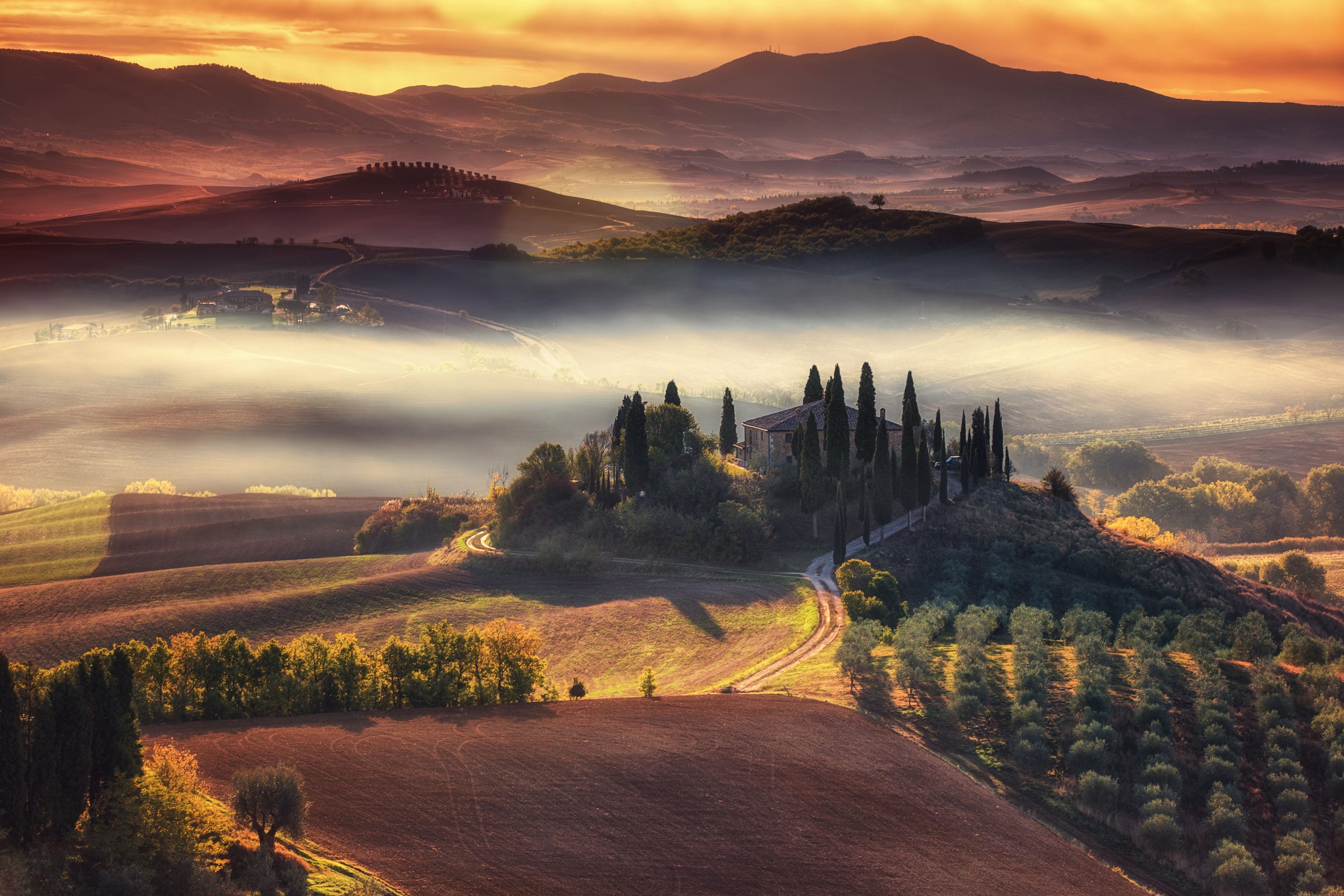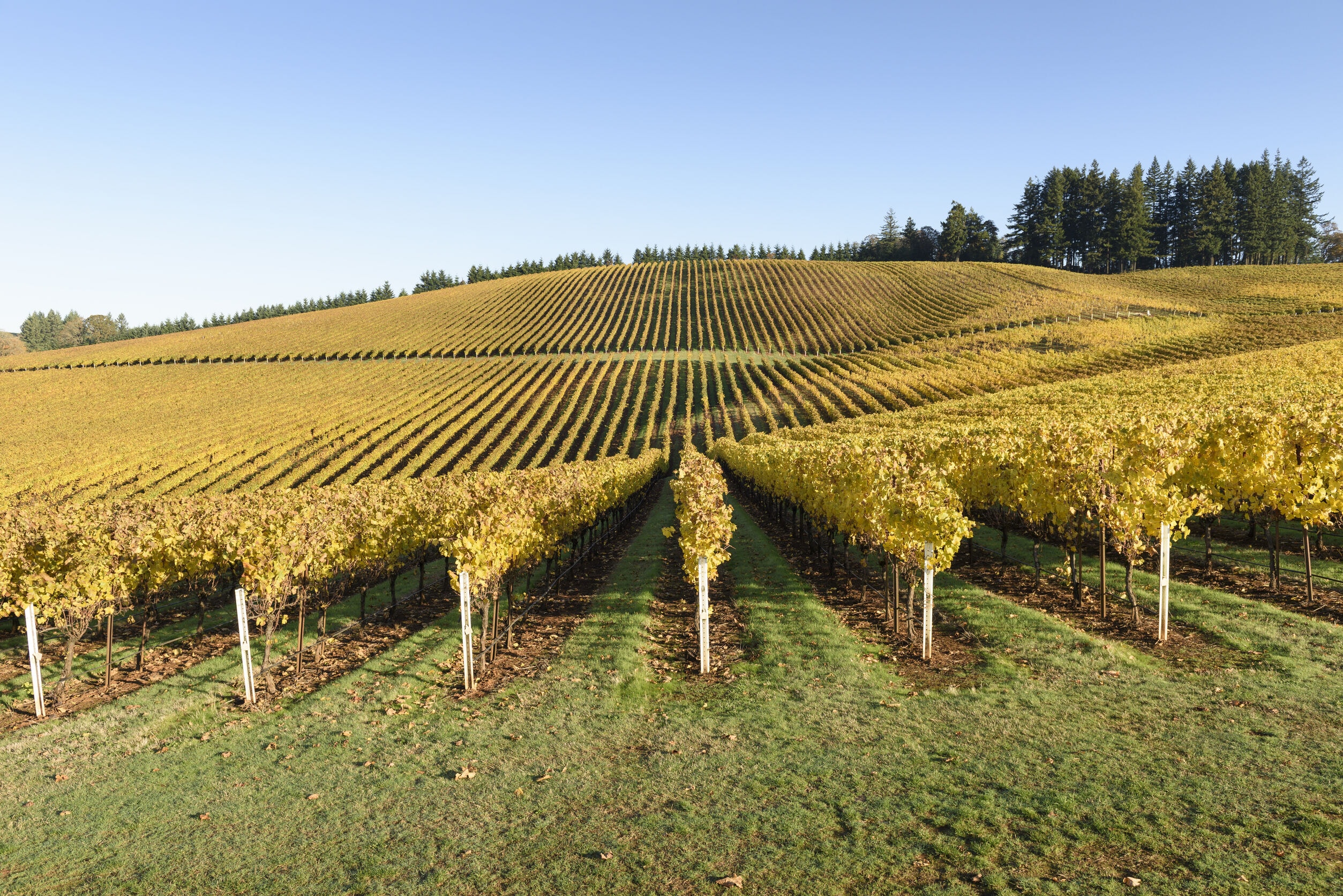Times are changing in this cool (but warming) climate region with a renewed focus on the red varieties of Bordeaux, Shiraz and even Nebbiolo, while the sourcing of the mainstay grapes, Chardonnay and Pinot Noir is on the move to higher (and cooler) sites in the Upper Yarra Valley.
The Present
Although the Yarra Valley is best known for its sophisticated chardonnays and perfumed pinot noirs, the Region’s founding fathers took their inspiration from the traditional red wines of Bordeaux. The 19th century pioneers were the first of three ‘waves’ of winegrowing, each driven by changes in consumer taste and climate. The most recent ‘wave’ has seen the Yarra Valley winegrowers refocus on Cabernet-based reds and Shiraz. Adding spice to the mix are plantings of Mediterranean varieties like Gamay, Grenache, Barbera, Nebbiolo, and Sangiovese. As the Yarra Valley’s evolution continues, what will the next wave bring?
Located in the northeast of Melbourne. Yarra valley is one of Australia’s premium winegrowing regions. (Photo from www.wtso.com).
--------------------------------------------------------------------------------------------------------
Exploring other Australia wine regions:
The First Wave
The first vines in the Yarra Valley were planted in 1838 by the Ryrie brothers. In 1850 Swiss migrant, Paul de Casella bought the property which the Ryrie’s had named Château Yering (now Yering Station). A decade later his brother Hubert established St. Hubert’s with fellow Swiss vigneron Frédéric Guillaume de Pury founding Yeringberg which is farmed today by the 4th generation of the de Pury family.
The de Pury family has the tradition of winemaking and farming dating back to 1863. Today, it is continued by the fourth generation. (Photo from www.yeringberg.com.au)
A Grand Prix award at the 1889 World Exhibition in Paris for a Château Yering red wine cemented 50 years of hard work by the pioneers of the fledging wine region. That the parochial French judges claimed the red was ‘too good to be Antipodean, it must be a French wine sent to the colony and returned in a new guise’. Not so, it was indeed a Yarra Valley wine and one of many award winners of the era.
The first wave faded at the end of the 19th century due to changing consumer tastes, new taxes and the fallout of phylloxera. The last vines at Yeringberg were abandoned in 1921 before replanting began in 1969.
The Second Wave
In the 1960’s boutique wineries began springing up across Australia as a new generation of winelovers emerged. Many were doctors who enjoyed the classic wines of France – especially Bordeaux. The most prominent was Dr John Middleton who set out to make a Cabernet-based in the mold of the great ‘clarets’ of yesteryear. Few would argue that his Mount Mary Quintet has comfortably achieved his goal. The 2019 (USD138) is an exemplar. Other newcomers like Yarra Yering and Seville Estate joined the re-established Yeringberg and St Hubert’s vineyards.
It was only in the 1980’s that the focus of the Yarra Valley burgeoning winegrowing moved to Chardonnay and Pinot Noir – driven by a nation-wide demand for the Burgundian grapes. James Halliday left the Hunter Valley to grow the varietal siblings at Coldstream Hills in 1985 with the French-owned sparkling house Chandon established the same year.
From this tiny base the Yarra Valley has grown to its current 2500 hectares with the Burgundian duo predominating – both for still wine production and sparkling in the Champagne mode.
The Third Wave
At the beginning of this century Yarra Valley winegrowers began to re-evaluate their endeavors. Trends in the marketplace saw an exploration of alternate grape varieties and wine styles with these changes amplified by the recognition that the Yarra Valley climate has warmed significantly over the last 50 years. Other winegrowers looked back to the 19th century pioneers to refocus their efforts on ‘claret’ styles and other fuller-bodied reds.
New Sites
The Yarra River rises northeast of Melbourne in the Yarra Ranges, gaining power as it heads towards Melbourne and Port Phillip Bay. The pioneers planted on the river flats around Yarra Glen – Yering Station and Yeringberg remain in the vicinity. However, the prime real estate is in the higher (and cooler) sites to the east near Healesville and south towards Woori Yallock. These vineyards were originally planted in the late 1980’s but did not flourish with successive cool and wet vintages failing to ripen Chardonnay and Pinot Noir for table wines. The low sugar, high acid grapes went into the sparkling wines which now form an important spoke in the Yarra Valley’s wheel of wine. These cooler vineyards are now the epicenter of table wine production with Gembrook Hill, Timo Mayer, Mac Forbes and Hoddles Creek Estate in situ with many of the Yarra Valley’s major players sourcing fruit from vineyards in the Upper Yarra area.
New Varieties
The move to the higher sites has seen winegrowers in the traditional valley floor re-evaluate their cépage with Mediterranean varieties like Grenache, Nebbiolo, Sangiovese and Gamay joining more traditional grapes Shiraz, Merlot and Cabernet Sauvignon. It’s not just reds with Roussanne re-emerging (it was originally planted by the Swiss winegrowers in the 19th century) along with Rhône compatriots Marsanne and the sun-loving Viognier.
Adding to the mix of grape varietals in Yarra Valley are the Mediterranean varieties like Gamay, Grenache, Barbera, Nebbiolo and Sangiovese.
A specific case is at TarraWarra where an underperforming block of Pinot Noir was replanted with new high-quality Merlot clones and Shiraz. The TarraWarra Estate Block K Merlot 2018 (USD20) and Block J Shiraz 2018 (USD20) epitomize this re-alignment.
The Changing of the Guard
The founding winegrowers are likewise responding to climate change with Mount Mary winemaker Sam Middleton (grandson of Dr John) planting Rhône whites Marsanne, Roussanne and Clairette and red grapes Grenache, Syrah, Mourvèdre and Cinsault. They are released under the Marli Russell label (Dr. John’s wife and co-founder) to avoid muddying Dr John’s legacy.
At Giant Steps there’s big changes too - not only in wine styles but winemaking and ownership. The entrepreneurial founder, Phil Sexton has sold to the Jackson Family from Sonoma, their third Australian purchase. Sexton has moved on (to make beer) with his long-serving winemaker, Steve Flamsteed now in a consulting role. Melanie Chester (ex Seppelt and Sutton Grange) has taken the winemaking reins and oversees new styles like the Giant Steps Syrah Carignan Grenache (2020 USD20)– a Pinot Noir and Shiraz blend. A Tasmanian Pinot Noir under the Fatal Shore label exemplifies the drift to the cool island state.
Adding spice to the mix are winegrowers like Timo Mayer, a descendant of a long line of German weinbauers (German wine grower). Timo made the wines at Gembrook Hill while establishing his own vineyard on a step ‘bloody hill’, naming one of his wines after the aforesaid knoll. Timo’s mantra “bring on the funk” is testament to the new era of Yarra Valley winegrowing.
Ageing potential
Questions have been raised about the ageability of these new wave wines. Certainly, the Yarra’s Chardonnays and Pinot Noirs have proved that 10 or more years in a cool cellar - or Vintec wine cabinet. The Bordeaux style reds last even longer with the wines from the early 1990’s still on peak form. As to the newer Mediterranean varieties, vine age is the key but on current indications, a cellaring potential of 5-10 years seems fine.
The future
Unfettered by tradition and the shackles of appellation, the Yarra Valley winegrowers are adapting their varieties, their viticulture and their winemaking to our ever-changing climate and consumer taste. Evolution is in the air – and in the glass.







